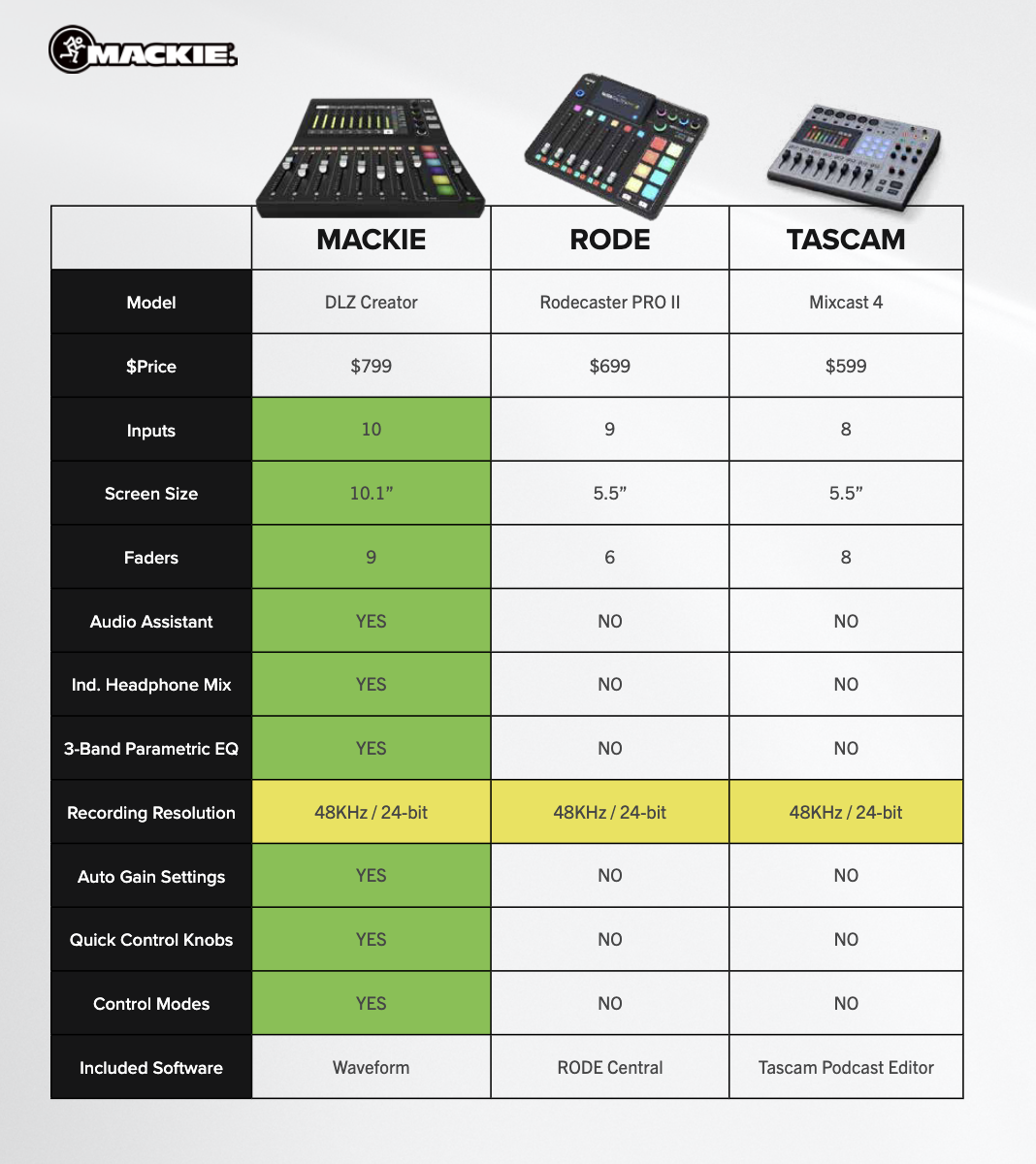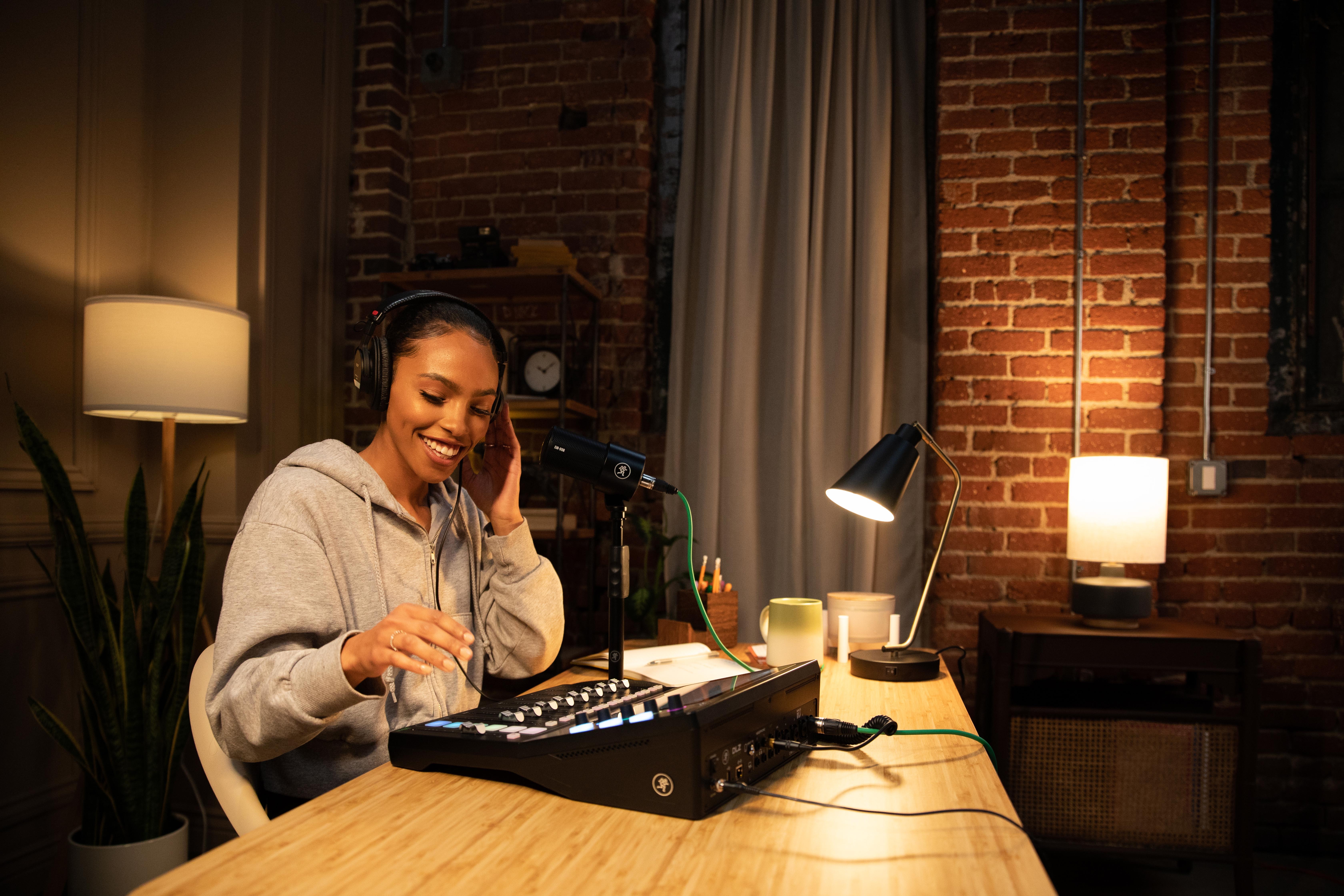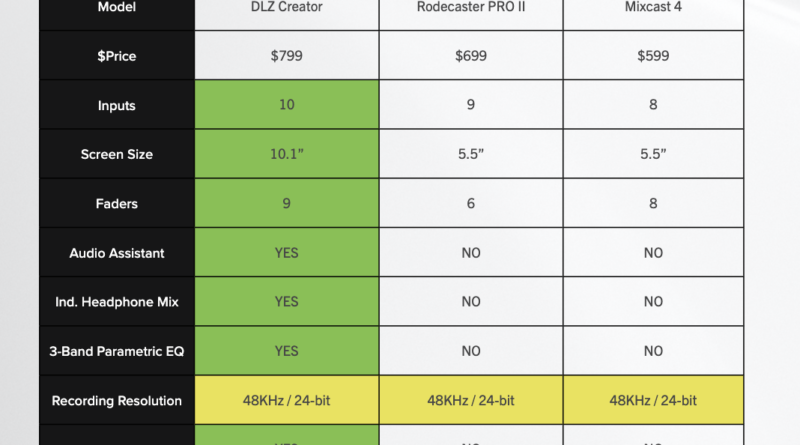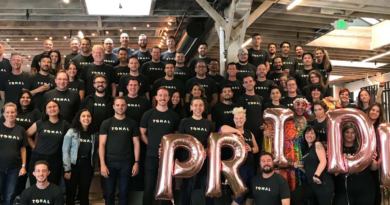Mackie finally takes on the Rodecaster with its own podcasting board
I wasn’t alone in loving the Rodecaster Pro when it arrived four and a half years ago. Sometimes a product comes along and just makes perfect sense, comfortably plugging a wide hole in the market. Given podcasting’s growth over the past decade, I’m frankly surprised more companies didn’t get in on the act.
Few companies are better positioned to deliver a great podcasting board than Mackie. Over the past three decades, the Seattle-based firm has become a leading name in the sound/mixing board business. If anything, it seems they had a leg up on the industry.
The DLZ Creator arrives this week with the Rodecaster Pro firmly in its crosshairs. At $799, the system is $100 more than the Pro 2, which arrived halfway through last year. That’s something of an immediate strike against the system, particularly coupled with Rode’s extremely large head start here.

Image Credits: Mackie
I asked Mackie to break down the DLZ’s advantages over its well-known competition. Here’s what the company said (along with the handy chart above):
- Audio assistant
- 3-band parametric EQ
- Audio gain settings
- Quick control knobs
- Nearly double the screen size
Audio gain settings are certainly nice. If there’s one lesson I’ve learned with the Blue mics of the world, it’s that too many options can, ironically, be the death of a product in the wrong hands. How many podcast guests have we heard over the years with distorted gain levels or incorrect directional settings? That said, I think purchasing a product like this assumes a base level of technical know-how — albeit one that’s significantly lower than Mackie’s pro products. The system seems simple enough to use out of the box, and you can get progressively more fancy as you go along.
Another unfortunate bit here is timing. The Rodecaster arrived two years before the pandemic. I know I’m not alone in having shifted my show to entirely remote recordings after doing in-person interviews for like seven or so years. Maybe some of the magic is gone, I dunno. But for a lot of reasons, I can’t see myself going back.

Image Credits: Mackie
Of course, plenty of shows do still record in person, and this is a great cornerstone for building a home studio on the relative cheap and easy. Quoting from Mackie again:
- Control Modes (Easy, Enhanced, and Pro) transform the touch display effortlessly from simple and intuitive to advanced and detailed, adapting to the individual user’s skill level, with no compromise in processing power or sound quality.
- The Mix Agent setup assistant provides easy setup and automates functions, dialing everything in exactly where it needs to be with minimal effort or learning curve.
- Pro Mode unlocks the full power of the DLZ Creator to take control and fully customize the product to get the desired sound.
- The AutoMix manages levels for up to four mics, so users and their guests can be heard — even when everyone speaks at the same time.
- The DLZ Creator produces studio-quality audio, and the Onyx80 mic preamps ensure any mic one uses will sound loud and pristine. Users can also create customized headphone mixes for guests.
Certainly seems worth looking into. The company offered me a review unit, but I ultimately declined, having moved to entirely remote interviews per the above. And besides, even if I were still doing all remote shows, I don’t have the space to set one of these things up. So I’m putting this out in the universe: a truly remote board I can stick in my backpack, plop on the table and stick three or four mics into. My Tascam/Zoom recorders have addressed this need to a certain extent over the years, but for my money, this is the next major hole in the market left to be filled.




